Within the enchanting expanse of Tosamaidan, a minimum of 8-10 days is a requisite to immerse oneself fully in the myriad landscapes it offers. Embarking on this odyssey unveils a trove of natural wonders, each more enthralling than the last, writes Dr Shaikh Ghulam Rasool
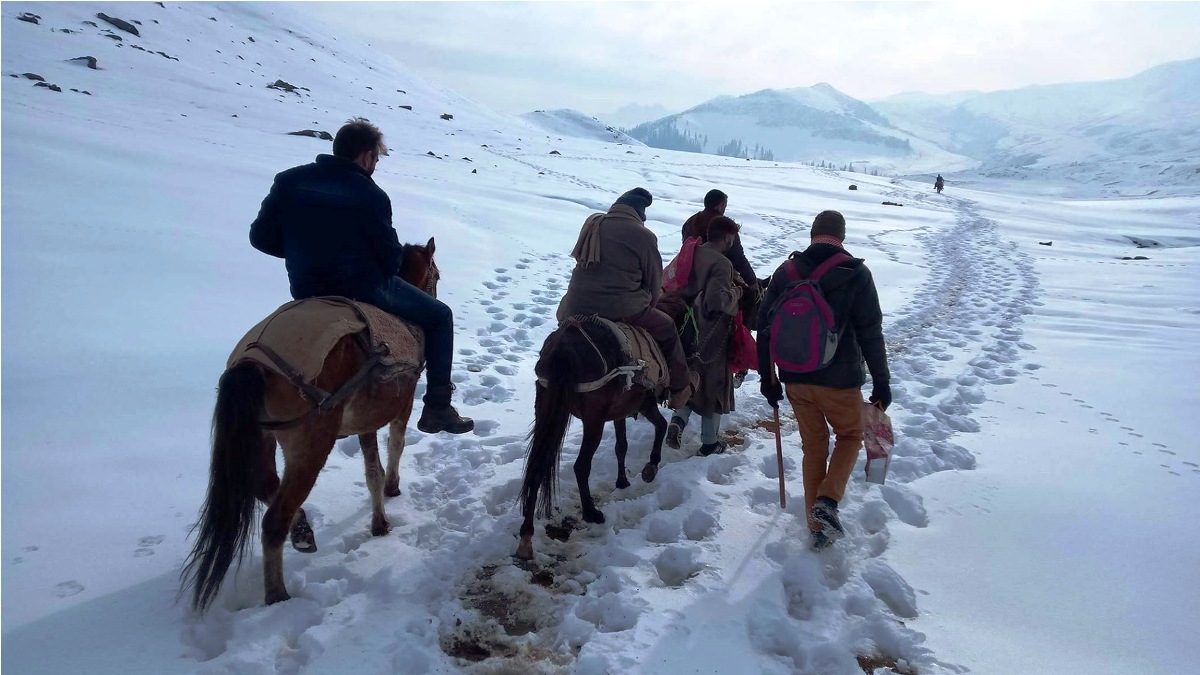
Snuggled within the Sukhnag range of the Pir Panjal mountains, Tosamaidan stands as a lofty plateau gracing the Budgam district of Jammu and Kashmir. Perched at an elevation of 10,500 feet above sea level, this expanse resides approximately fifty kilometres away from the urban embrace of Srinagar city. Enveloped by an ethereal allure, Tosamaidan’s grandeur showcases the most expansive pastures, adorned with a snowy mantle from November through April.
Encompassing four prominent meadows – Gujjerbahak, Guttemarg, Chinamarg, and Badshahmarg, Tosamaidan’s appellation, Tosa, carries a tapestry of origin stories. One legend traces its genesis to Mehmud Ghazni, who purportedly exclaimed tushahemaidan, signifying ‘you are the king of meadows’. This phrase evolved into the present name, etching a poetic saga into the land.
An Ancient Route
In antiquity, Tosamaidan stood as a haven for shepherds from neighbouring lands, a testament to its historical significance in the tapestry of Kashmir. Reverberating through time, Tosamaidan remains a cherished route, historically linking Kashmir valley Poonch and the swathes of western Punjab nestled between the meandering Jhelum and Indus rivers, as documented by M A Stein in 1899.

This expanse also served as a pivotal thoroughfare during the eras of Mughal opulence, the reign of the Lohara dynasty, and the ascendancy of the Sikh domain. Al-Beruni’s annals reflect vibrant trade along this very route, painting a vivid portrait of commercial exchanges.The Mughal legacy further glistens upon Tosamaidan’s canvas, with their architectural opulence manifested in multi-storey marvels at Dumdum and Drang.
A Jungle Around
Huddled amidst the embrace of dense forests, predominantly adorned with towering fir, pine, and deodar trees, alongside the majestic spectacle of snow-capped peaks and meandering rivers and streams, these meadows form a haven for diverse wildlife and hold a pivotal role as indispensable pastures for the livestock of neighbouring mountain-bound villages.
A multitude of streams, originating from proximate peaks or adjacent meadows, converge into the gentle flow of the Sukhnag River. This lifeline sustains tens of thousands across three downstream districts, nurturing their existence. In harmony with this vibrant ecosystem, a tapestry of pastoral and agricultural communities, including Gujjars, Bakarwals, Pohls, Paharis, and Kashmiris, draw sustenance and livelihood from these verdant expanses. When summer unfurls its warmth, hundreds of families, accompanied by a multitude of livestock, embark on a seasonal migration to this hallowed land, dwelling here for approximately 4-5 months before retracing their steps to their lowland village abodes.
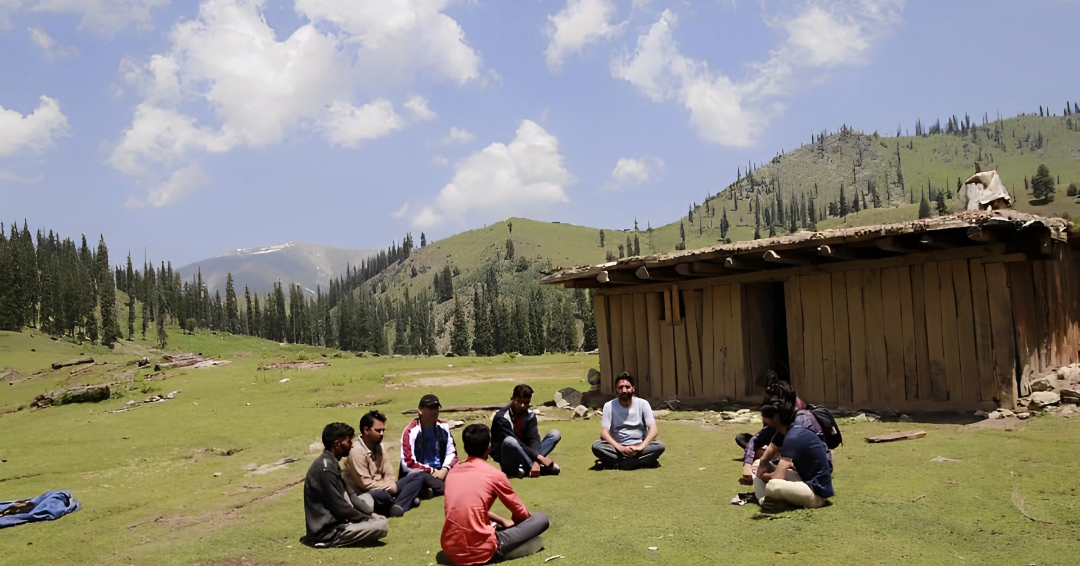
The Catchment
The charming villages at the foothills of Tosamaidan, such as Sutharan, Drang, Lassipora, Ringzabal, Shunglipora, Chill-Brass, Zoogu, Kharien, and more, provide a glimpse into the rustic tapestry of Kashmiri rural life. Amidst this fertile land, maize, beans, and potatoes flourish as predominant crops tended by the locals. The rural economy further thrives through the cultivation of horticultural delights, including apples and walnuts.
Owing to its captivating topography, Tosamaidan’s resplendent panorama possesses boundless potential for tourism. Verdant meadows are embraced by vast, enigmatic forests, as rivers and streams cascade in a harmonious symphony. Springs and high-altitude lakes bestow breathtaking views, awash in hues of serene green. The snow-draped mountain summits stand as awe-inspiring sentinels.
Stay Longer
Within this enchanting expanse, a minimum of 8-10 days is a requisite to immerse oneself fully in the myriad landscapes it offers. Embarking on this odyssey unveils a trove of natural wonders, each more enthralling than the last.
Among these luminous gems are Chinamarg, Dumdum, Danvaas, Koker-seene, Pandan Valley, Kadleh Bal, Gateh Marg, Haffaz, Mani-Naar, Proun Shahar, Guzzer, Gaddeh-Taar, Shinneh Khazana, Shupnaag, Kashp-Pathri, Balleh-Masheed, and more.
From the vantage point of Khadlabal, prominent places like Naginibal, Burgah, Doorien, Nunewaan, Khaalkatt, and others beckon with their splendour. These locales stand as living testaments to the beauty nature bestows, weaving an unforgettable tapestry that leaves an indelible mark upon the soul.
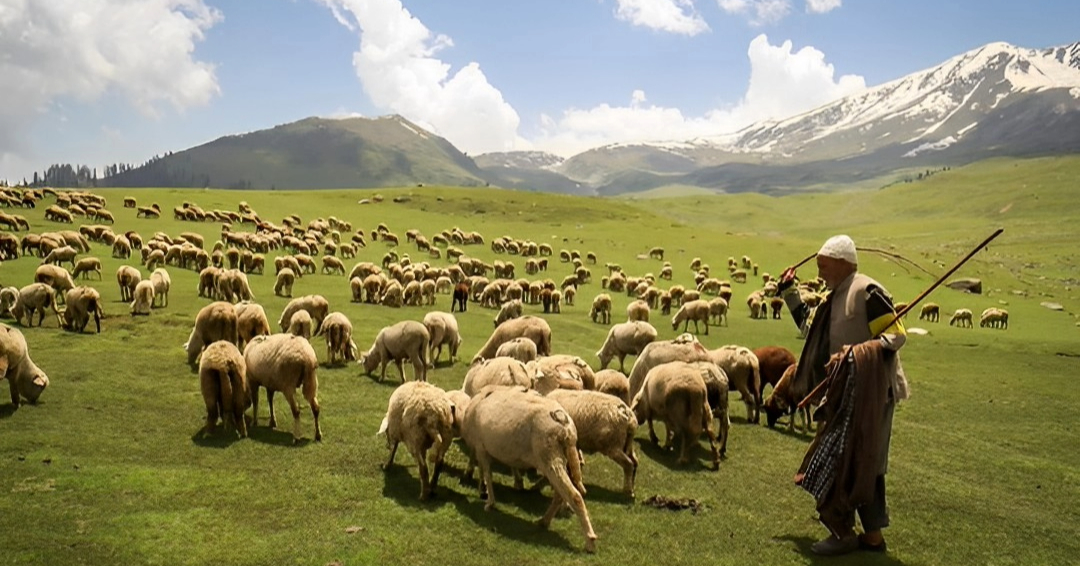
Wildlife sanctuaries encompass a realm of natural wonders, including the Gulmarg Wildlife Sanctuary (previously known as Pehjen Wildlife Sanctuary), Tattakutti Wildlife Sanctuary, and the enchanting Kalamund-Tatakuti and Khara Gali regions, which encompass the Kalamund-Tatakuti and Khara Gali Reserves. Khara Gali, a Gali itself, claims the Khara Sar lake as its namesake.
Flora and Fauna
Tosamaidan and its encompassing environs stand as a sanctuary for a rich tapestry of flora and fauna. The meadows come alive with a vibrant palette of wildflowers, including delicate irises and cheerful buttercups. Within the sheltering embrace of the forests, a multitude of tree species find their home.
The heavens above are adorned with the graceful flight of the Himalayan Monal, the resplendent Koklass Pheasant, and the elusive Snow Partridge. Amidst these landscapes, foxes, hares, and an orchestra of birds find their serene abode.
This realm also cradles a treasure trove of medicinal plants, such as Saussureacostus, Picrorhiza Kurroa, and Jurinea Dolomiaea.
With a tapestry of 95 bird species, including the resplendent Kashmir flycatcher, the majestic Himalayan snowcock, the illustrious Impeyan Monal, and the captivating Koklass pheasant, alongside a fluttering array of 31 butterfly species, life thrives in abundance.
Within this dynamic ecosystem, a symphony of birds, mammals, and aquatic life finds harmony. Pheasants, partridges, and migratory birds flourish in these verdant expanses. Pristine lakes cradle trout and an array of aquatic creatures, weaving a tapestry of biodiversity. For enthusiasts of the natural world, Tosamaidan stands as an invitation to connect intimately with these marvels in their untouched habitat.
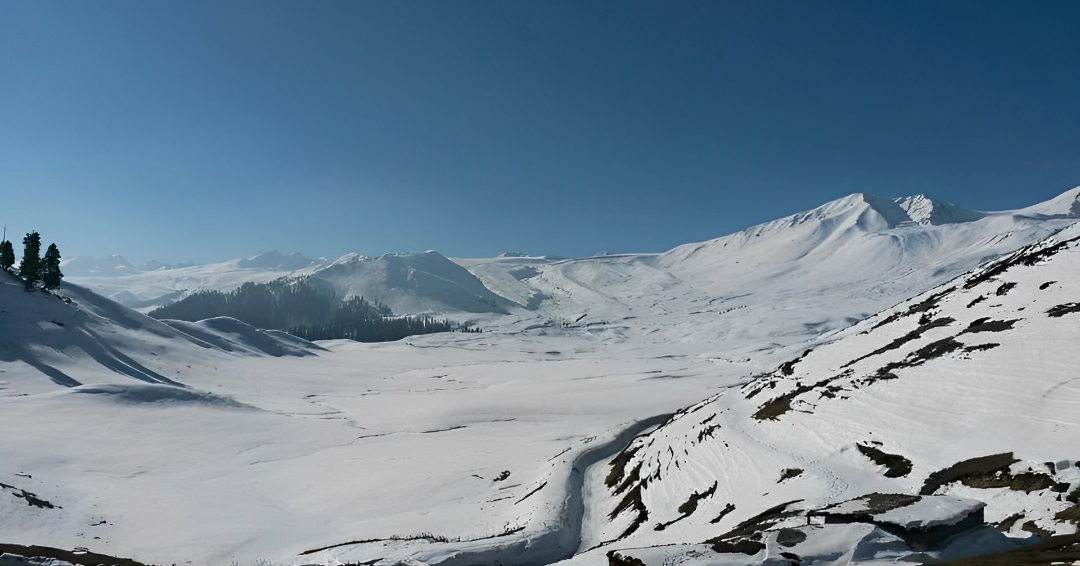
The wildlife within Tosamaidan’s embrace is as diverse as it is captivating. The expanse shelters an array of creatures, including the regal Himalayan brown bear, the elusive Asiatic black bear, the enigmatic Leopard, the graceful Musk deer, the spirited Barking Deer, the contemplative Kashmir grey langur, the elusive Snow leopard, the formidable Tibetan wolf, the cunning Red fox, the agile Leopard cat, the stealthy Jungle cat, the charming Yellow-throated marten, the majestic Himalayan Black Bear, the gallant Himalayan Goral, the illustrious Markhor, the swift Wolf, the alluring Snow Cock, the enchanting Chakoor, and the captivating Himalayan Partridge. This landscape also serves as a natural corridor, facilitating the migration of brown bears and markhors between the woodlands of Poonch and the embracing Kashmir Valley.
Many of the lakes and streams nurtured by these meadows and fed by glacial sources hold the primary responsibility of quenching the thirst of four districts – Budgam, Baramulla, Srinagar, and Poonch.
An Initiative
In 2015, the Tosamaidan Conservation and Development Foundation, in collaboration with the School for Rural Development (SRDE), embarked on an innovative conservation plan bearing the theme Community Driven Adventure and Rural Eco-Tourism (CDART) 2015.
This visionary initiative was subsequently embraced by the government on March 29, 2016, and inaugurated by the former Chief Minister on May 29, 2016, culminating in the establishment of a distinct Development Authority. The essence of this plan lies in empowering local communities to forge dignified livelihoods while safeguarding the forests and the encompassing biodiversity. The successful realization of CDART stands as a beacon, inspiring the Jammu and Kashmir government to champion environmental conservation across the entirety of the state.
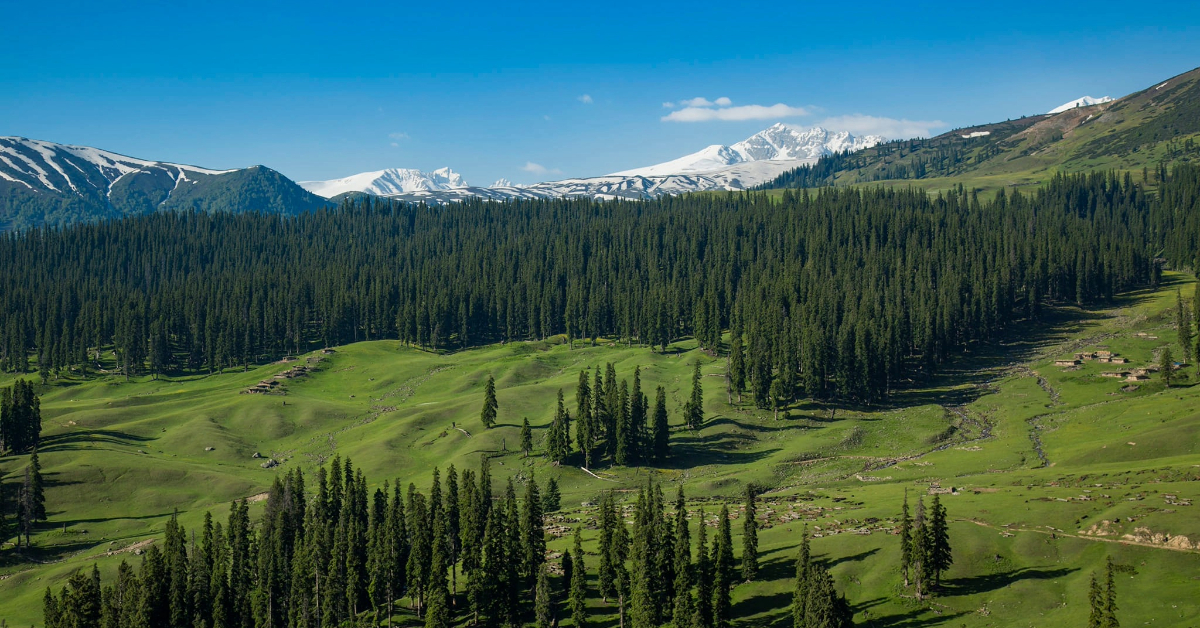
Tourism Potential
To effectively tap into the tourism potential, it becomes paramount to establish a comprehensive framework that not only beckons tourists but also staunchly safeguards and preserves the pristine environment that exists. These regions hold within them a realm of possibilities, ranging from invigorating treks, exhilarating water sports, captivating snow-based activities, and daring mountaineering expeditions, to immersive wildlife and bird-watching escapades. This new paradigm of tourism has been deftly integrated to foster a robust sense of community involvement, ensure fair distribution of benefits, and champion the propagation of conservation consciousness.
In this endeavour, local communities are not merely spectators; they actively partake in the promotion and instruction of adventure sports within the meadows. Many are engaged in the nurturing of rural tourism, breathing life into traditional arts and crafts, ushering in innovative products, elevating hygiene and fundamental sanitation standards, bolstering formal education, fostering skill development, and fortifying training and capacity enhancement initiatives. The development of rural tourism within these villages holds the potential to usher in elevated incomes, an upswing in employment opportunities, and a richer diversification of the rural economy, which has traditionally been heavily reliant on agriculture.
Accessibility
Tosamaidan can be accessed by cab or scenic trekking routes from nearby foothill villages. From Srinagar Airport, travellers can take the Srinagar Airport-Sukhnag road via Zoogu-Arizalto Sethaharan and onward to Tosamaidan. Routes from Srinagar itself include travelling through Magam-Khagor Beerwah-Arizal to Sethaharan before reaching Tosamaidan. Another option from Beerwah is to take the Beerwah College Road through Sethaharan.
For those seeking a trekking adventure, routes from foothill villages like Ringzabal-Kadlabal, Shunglipora/Drung/Waganpathri-Dumdum trail, or Zoogu-Shaalkien to Dummdum offer scenic paths culminating in Tosamaidan. With cab, bus, or trekking access, Tosamaidan provides multiple transportation options for travellers journeying to this mountainous destination.
The Summer
From May to October, Tosamaidan offers a wide range of outdoor adventures and cultural experiences for visitors to immerse themselves in. Families can enjoy leisurely picnics in the open meadows. Trekkers can explore the region’s lush landscapes, from lakes and peaks to rivers and flower sites, on small hikes or multi-day expeditions.
The lakes and rivers provide opportunities for boating, rafting, and trout fishing in the icy waters. Camping allows visitors to relax in the tranquillity of nature. Photography enthusiasts can capture Tosamaidan’s diverse flora, fauna, and landscapes while nature walks provide chances to observe the beauty up close. Interacting with local communities offers cultural learning and heritage appreciation.
When the nights are clear, stargazing under the vast sky is a highlight. With its diversity of summer activities, Tosamaidan provides experiences to match any interest or adventure level.
The Winter
From November to March, Tosamaidan transforms into a wintry paradise perfect for snow sports and adventures. Snow trekking allows exploration of the snow-covered landscapes. The vast expanses provide world-class venues for skiing and skating. Winter camping in the snowy meadows makes for a unique overnight experience.

Photographers can capture the ethereal beauty of the snow-draped scenery. Treks to alpine lakes like Gaddeh Sar, Hokkeh Sar, and Buod Sar offer stunning icy panoramas. Various trekking routes connect Tosamaidan to neighbouring destinations like the route to Gulmarg via Bassam Gali and Pandan-Affarwath or the trails from Kadlebal to Mandi, Tattakutti, Tresar, Kounsar, and Doodhpathri. With snow-blanketed meadows and peaks, Tosamaidan becomes an outdoor winter wonderland.
Homestays are available in Sithaharan and Sukhnag villages, and tented accommodation is available at Tosamaidan and Kadlebal-Tosamaidan.
(The author is a naturalist, and conservationist besides the founder and chairperson of the J&KRTI Movement, Tosamaidan Bachav Front –TBF. Ideas are personal.)
from Kashmir Life https://ift.tt/q1mj3zM
via IFTTThttps://kashmirlife.net
No comments:
Post a Comment